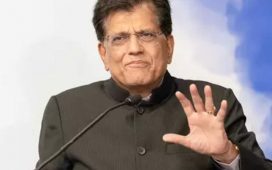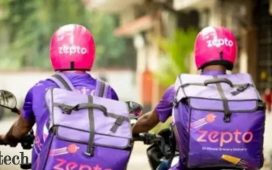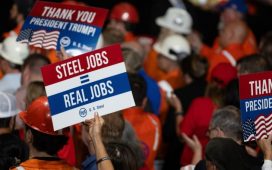Technology, economy and skilled labor top priorities
Arizona’s economy is shifting into a semiconductor powerhouse and ASU is at the forefront of not only advancing the technology but also creating the workforce needed to sustain that transformation.
That was the theme at the seventh annual Congressional Conference held Aug. 15 at Arizona State University’s Tempe campus, titled “Advancing Arizona’s Technological Competitiveness.”
The daylong event highlighted how Arizona is a major player in the U.S. push to regain the competitive edge in semiconductor research, development and manufacturing.
The conference featured panels and speakers that included members of Congress, academic leaders and industry experts.
Throughout the day, many speakers focused on the critical need to train a workforce to fill the thousands of jobs that will be created soon in the new domestic semiconductor industry. Workers will be needed not only to research and develop next-generation technology but also to manufacture the advanced components, as well to support the industry in roles ranging from restaurant workers to teachers.
U.S. Rep. Debbie Lesko said that Arizona is lucky to be home to many diverse industries and discussion is needed now to address the challenges.
“These companies, many on the cutting edge of emerging technology, require skilled labor, robust manufacturing and secure supply chains to continue their investment in our state,” she said in remarks via video.
“I am thankful to Arizona State for facilitating these important discussions to ensure Arizona remains competitive as technology advances and new leaders seek to find a home here in our state.”
Technology is inextricably linked to the state’s economic progress, said Sally C. Morton, executive vice president of ASU’s Knowledge Enterprise.
She noted that ASU is now leading several large-scale research projects thanks to legislators’ support in securing funding.
“Congressional approval of federal investment via the CHIPS and Science Act, among other legislation, really fuels America’s global competitiveness.
“ASU plays an important role in the act’s implementation with respect to both research and education. ASU has the technical capabilities, world-class faculty, the nation’s largest engineering college as well as other academic units, and relationships with semiconductor industry leaders such as Applied Materials, Intel and (Taiwan Semiconductor Manufacturing Company),” she said.
“We partner with state entities on workforce training and corporate engagement, we invest in accelerated faculty hiring and infrastructure to support research efforts — all to advance the technological competitiveness and economic resilience of Arizona.”

U.S. Rep. Debbie Lesko speaks via video at the 2023 Congressional Conference, Tuesday, Aug. 15, at the Memorial Union on ASU’s Tempe campus. Photo by Charlie Leight/ASU News
ASU leading major technology initiatives
A panel discussion titled “ASU Technology Fireside Chat” highlighted several large-scale projects at the university.
SWAP Hub
Krishnendu Chakrabarty, a professor of microelectronics and an electrical engineer, said he left Duke University to come to ASU in January because “I was very excited by the opportunities and the vision at ASU to drive microelectronics.
“As the CHIPS Act was signed and there was so much excitement about regrowing and resurging microelectronics in this country, this was the place to be.”
He discussed the SWAP Hub, a collaboration on research and development that would speed the time it takes to transform lab ideas into practical solutions. The SWAP Hub, as outlined in its proposal, is led by ASU and has more than 60 corporate, startup, academic and national lab partners from the semiconductor and defense sectors. It is proposed for consideration as part of the Microelectronics Commons, a $1.63 billion Department of Defense program funded by the 2022 CHIPS and Science Act.
“The hubs are intended to provide the mechanism whereby any researcher could take ideas from the lab and prototype them, demonstrate scalability and viability, and it could lead to actual commercialization,” he said.
“Currently we have a real shortage of trained engineers in microelectronics. The pipeline isn’t there, so we need to work with the community colleges, going all the way down to K–12.”
EPIXC
Sridhar Seetharaman, a professor of engineering, said that the U.S. Department of Energy selected ASU to receive up to $70 million to create a Clean Energy Manufacturing Innovation Institute devoted to fighting greenhouse gas emissions from industrial process heating. The project is called Electrified Processes for Industry Without Carbon, or EPIXC.
“The purpose of EPIXC is to re-industrialize the nation by developing technologies that allow you to de-carbonize manufacturing – basically take carbon out of the loop when you’re producing products,” he said.
EPICX is seeking cost-effective solutions to produce products using clean electric power. The effort will also seek to retrain workers, including those in tribal areas, that lost jobs due to the closure of coal plants.
“Ultimately, you can only deploy this as people are trained,” he said.
Arizona Water Innovation Initiative
Dave White, associate vice president for research advancement at ASU, said the initiative is a federal-state partnership, with the state committing $40 million. ASU will work with industrial, municipal, agricultural, tribal and international partners to deploy new technology for water conservation, desalination and reuse.
“While the money is important, what the money signifies is our ability to develop new solutions to Arizona’s water challenges,” he said.
Immigration reform to help small businesses
U.S. Rep. Juan Ciscomani told the crowd in the Memorial Union that he’s focused on legislation to ease the worker shortage. He co-sponsored a bill called the Hire Act to reduce red tape for small and rural businesses to hire seasonal workers under the guest visa program.
“The number one issue I keep hearing about every time I go and talk to businesses — whether small businesses or large corporations — is people, workforce,” he said.
Work visas is one way to tackle that issue, Ciscomani said.
“I’m an immigrant and that’s a lens through which I see things — as being a grateful American and also someone given the opportunity to live here, work here, be here,” he said.
“So two of the groups I’m very focused on finding opportunities for are those that want to come here and work, and our DACA students that have been here already and deserve a real shot at the American dream as well.”

U.S. Rep. Juan Ciscomani speaks during the 2023 Congressional Conference held Aug. 15 in Tempe. Photo by Charlie Leight/ASU News
Competing for workers in manufacturing
A panel discussion titled “Developing Skilled Human Resource Assets for Thriving in Technological Revolutions” was moderated by U.S. Rep. Andy Biggs.
The panelists, who addressed how businesses are competing for the same pool of skilled workers, were Michael Cook, global director of the Academic Enablement Group; Anne Gielczyk, vice president of NOCTI Business Solutions; Debra Volzer, who leads government and workforce partnerships for the Society of Manufacturing Engineers; and John Zappa, director of product management for The ARM Institute.
Workforce development will have to start with changing the minds of young people and parents, who often don’t realize that manufacturing jobs can be well-paying, Gielczyk said.
“We can’t fill the pipeline fast enough,” she said.
Another important area is reskilling, Cook said.
“We don’t want to see leakage of people who are just retiring because they don’t have the most contemporary of skill sets,” he said.
“We have to bring them into the forward-thinking economy.”
Volzer said her organization has launched an initiative to identify the barriers to workforce recruitment and retention in manufacturing.
“Last year, 60% of manufacturing workers exited because they were unhappy in their role,” she said.

U.S. Rep. Andy Biggs (right) moderates a panel on “Developing Skilled Human Resource Assets for Thriving in Technological Revolutions” at the 2023 Congressional Conference. Photo by Charlie Leight/ASU News
Securing sustainability
Another panel discussion, titled “Empowering Economic Growth: Resilient American Manufacturing,” was moderated by U.S. Rep. Greg Stanton and addressed innovation in water and energy conservation.
“We can’t meet the needs of our growing population or continue to attract and support businesses like the semiconductor industry if we don’t solve our challenges with water,” Stanton said.
One of his first bills in Congress was the creation of the Arizona Environmental Infrastructure Authority to support conservation and reuse projects.
The panelists included Robert Bruck, vice president for corporate business development at Applied Materials Inc.; Seema Phull, chief strategy officer for Kore Power; Robert Sandoval, environmental, safety and health program manager for Taiwan Semiconductor Manufacturing Company; and Brian Sherman, chief innovation officer for the Arizona Commerce Authority.
Bruck said, “In our industry, we cannot emphasize energy resiliency enough,” especially with the advent of artificial intelligence.
“As these AI tools and solutions come into our society today, the data centers of the world use about 10% of what’s on the grid. Left unaltered, by 2030, they’ll use 30% of the grid.
“Things like making the grid smarter is good for everybody — bringing in renewables like wind and solar as part of the grid as well as battery and storage technologies.
“We can’t just create a problem in the chip industry that we can’t mitigate or solve,” he said, adding that Applied Materials is working with ASU on long-term projects to address the issue.
Sherman said that industry has been a leader in water-recycling innovation.
“We have water constraints, that’s obvious,” he said. “I think a lot of solutions will come from the entrepreneurial community.”

U.S. Rep. Greg Stanton moderated a discussion on “Empowering Economic Growth: Resilient American Manufacturing.” Panelists (from left to right) were Robert Sandoval, environmental safety and health program manager for Taiwan Semiconductor Manufacturing Company; Seema Phull, chief strategy officer for Kore Power; Brian Sherman, chief innovation officer for the Arizona Commerce Authority; and Robert Bruck, vice president for corporate business development at Applied Materials Inc. Photo by Charlie Leight/ASU News
Taiwan Semiconductor Manufacturing Company (TSMC) has been forced to come up with recycling and reuse solutions already because Taiwan has also been in a drought, Sandoval said.
“A lot of those solutions have been integrated into the design of the new factories,” he said.
“One thing we have really focused on is hitting that point where we’re able to reuse water 3.5 times before it’s discharged from the facility.
“We will start up the facility with the ability to recycle 65% of the water.”
Kore Power is building a plant in Buckeye, Arizona, and Phull said the company is designing both its manufacturing process and the building to be water efficient. But it’s costly.
“That’s where ASU can help us is with innovative ideas and partnerships,” she said.
Drawing diverse industries
Both of Arizona’s senators – Mark Kelly and Kyrsten Sinema – addressed the conference via recorded remarks and noted how the bipartisan CHIPS and Science Act has jump-started the state’s economy.
In addition to the semiconductor industry, Arizona has drawn investment in electric vehicles, autonomous vehicles, solar energy and battery manufacturing, Kelly said.
“These types of manufacturing projects are good for our state, our workers, our economy and our national security,” he said.
“They’re bringing good-paying jobs to Arizona, many of which do not require a four-year degree.”
Sinema said that leadership by ASU, in addition to the state’s business-friendly climate, have helped to draw a diversity of technology industries.
“Our work ensuring that Arizona thrives continues. We’re helping universities, community colleges and small businesses across the state recruit, retain and cultivate the right talent that will power our innovative future,” she said.










